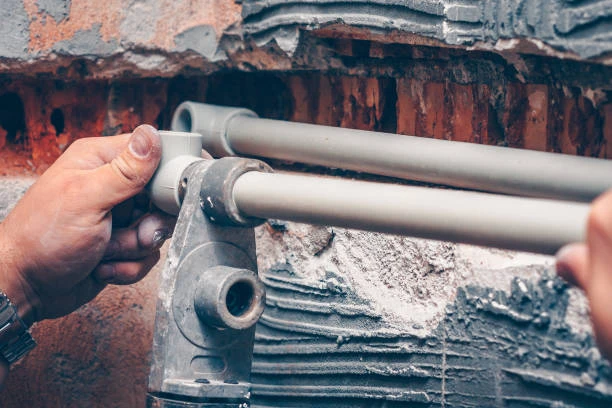When it comes to plumbing systems, selecting the right materials is crucial for ensuring durability, efficiency, and cost-effectiveness. (Polypropylene Random Copolymer)PPR pipe fittings have become a popular choice for many residential and industrial applications due to their unique properties. In this article, we will explore the key considerations for choosing PPR pipe fittings, helping you make informed decisions for your plumbing needs.
1. Understanding PPR Pipe Fittings
Before diving into the considerations, it’s essential to understand what PPR pipe fittings are. Made from polypropylene random copolymer, PPR fittings are known for their lightweight nature, chemical resistance, and high-temperature tolerance. These properties make them suitable for various applications, including water supply, heating systems, and industrial plumbing.
2. Assessing Application Needs
2.1. Residential vs. Industrial Use
The intended application plays a significant role in choosing PPR fittings. For residential plumbing, consider factors like water temperature, pressure, and the specific layout of your system. In contrast, industrial applications may demand higher resistance to chemicals and extreme temperatures.
2.2. Water Quality
Consider the quality of water that will flow through the pipes. If you are dealing with aggressive chemicals or substances, ensure that the PPR fittings you choose have the appropriate resistance to those materials.
3. Temperature and Pressure Ratings
3.1. Operating Temperatures
PPR fittings can typically withstand temperatures ranging from -10°C to 95°C. However, for applications involving hot water, it’s crucial to verify that the fittings are rated for the maximum temperature they will encounter.
3.2. Pressure Requirements
Each plumbing system has specific pressure requirements. Make sure the PPR fittings you select can handle the pressure levels expected in your system to avoid leaks and failures.
4. Size and Compatibility
4.1. Pipe Diameter
Ensure that the diameter of the PPR fittings matches the pipes you plan to use. Mismatched sizes can lead to flow restrictions and increased pressure drop, affecting system efficiency.
4.2. Compatibility with Other Materials
If your plumbing system includes various materials, such as metal pipes or different types of plastics, confirm that the PPR fittings are compatible. Adapters or transition fittings may be necessary in mixed-material systems.
5. Quality and Certification
5.1. Manufacturer Reputation
Choosing fittings from reputable manufacturers is crucial for ensuring quality and reliability. Research brands known for their rigorous quality control and customer satisfaction.
5.2. Certifications and Standards
Look for PPR fittings that comply with international standards and certifications, such as ISO or ASTM. These certifications indicate that the products meet specific safety and performance criteria.
6. Installation Considerations
6.1. Ease of Installation
PPR fittings are generally easy to install using heat fusion techniques. Consider whether you have the necessary tools and skills for installation, or if you will need to hire a professional.
6.2. Training and Support
If you’re new to using PPR fittings, check if the manufacturer provides installation guides, training, or customer support. Having access to resources can simplify the installation process.
7. Cost-Effectiveness
7.1. Initial Costs vs. Long-Term Savings
While PPR fittings may have a higher upfront cost compared to some alternatives, their durability and low maintenance requirements can lead to significant long-term savings. Evaluate the total cost of ownership when making your decision.
7.2. Availability and Sourcing
Consider the availability of PPR fittings in your area. Sourcing fittings from local suppliers can reduce shipping costs and ensure quicker delivery times.
8. Environmental Considerations
8.1. Sustainability
PPR fittings are recyclable and have a lower environmental impact compared to some other plumbing materials. If sustainability is a priority for your project, PPR fittings can be a responsible choice.
8.2. Lifecycle Assessment
Think about the lifecycle of the materials you choose. PPR fittings generally offer a longer lifespan, reducing the need for frequent replacements and minimizing waste.

9. Warranty and Support
9.1. Warranty Offerings
Check if the manufacturer provides warranties on their PPR fittings. A good warranty indicates confidence in the product’s quality and can offer peace of mind.
9.2. Customer Support
Reliable customer support can be invaluable, especially if you encounter issues during installation or use. Ensure the manufacturer offers accessible support channels.
Conclusion
Choosing the right PPR pipe fittings is essential for the success of any plumbing project. By considering factors such as application needs, temperature and pressure ratings, size compatibility, quality, installation ease, and environmental impact, you can make an informed decision that meets your plumbing requirements. With the right fittings in place, you’ll enjoy a reliable, efficient, and long-lasting plumbing system.
FAQs
- What are PPR pipe fittings made from?
PPR pipe fittings are made from polypropylene random copolymer, known for its durability and chemical resistance. - Can PPR fittings be used for hot water applications?
Yes, PPR fittings can typically withstand temperatures up to 95°C, making them suitable for hot water systems. - How do you install PPR fittings?
PPR fittings are usually joined using heat fusion techniques, which create a strong, leak-proof bond. - Are PPR fittings environmentally friendly?
Yes, PPR fittings are recyclable and have a lower environmental impact compared to many other plumbing materials. - What should I consider when choosing PPR fittings?
Consider application needs, temperature and pressure ratings, size compatibility, quality, installation ease, and environmental impact when selecting PPR fittings.


















